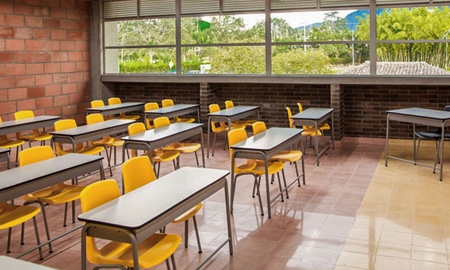The education ministry’s main objectives include lowering dropout rates, improving results in rural areas, training teachers, bringing technology into the classrooms and internationalizing higher education.
One of the biggest steps taken to date was to increase the education budget to be able to declare free universal education starting in January 2012. “This benefits 8.6 million students from grade 0 to grade 11,” says María Fernanda Campo Saavedra, Minister of Education.
The government’s ‘Todo es aprender’ (Everything is learning) program has targeted 22,000 schools with the lowest test scores – 77% of which are in rural areas – and seeks to develop their skills in language and mathematics.
“What is most revolutionary about the program is that the country’s 3,000 best teachers – chosen through a meritocracy system – go to the classrooms to accompany math and language teachers, helping and supporting them in transforming their skills,” adds Ms. Campo Saavedra.
The same program is also putting computers and other digital devices at the disposal of teachers and students, while guaranteeing school meals and transportation for elementary school children.
Another program, ‘Supérate’ (Get ahead) combines academics with sports. With research showing that active children perform better in school, it is a project intended to foster better students while opening doors to potential world-class athletes who would otherwise not have the opportunity to discover or practice certain sports.
Run by state entity
Coldeportes, Supérate was launched in 2011 and now reaches some 2 million children between the ages of 7 and 18. “We have had the Intercollegiate Games for 32 years but we decided to mix it with Supérate to strengthen both programs, calling it Supérate Intercolegiados. It has helped to discover new talent,” says Coldeportes Director Andrés Botero.
“The best athletes are chosen to form part of the Colombian team that participates in the Central American and Caribbean School Games and South American School Games, where many children have their first international experience. I hope that in 10 or 15 years we can see these children being Olympic champions.”
As for higher education, the state runs a financing body, called ICETEX, that offers student loans at excellent interest rates.
According to the Minister, between the grants, loans and public universities (where tuition is fully subsidized), 72% of young people enrolled in higher education study with the support of the state.
Meanwhile, the education ministry is promoting agreements with universities from around the world to increase mobility of students, teachers and researchers and help to further raise what is already a very high quality of tertiary education.

0 COMMENTS